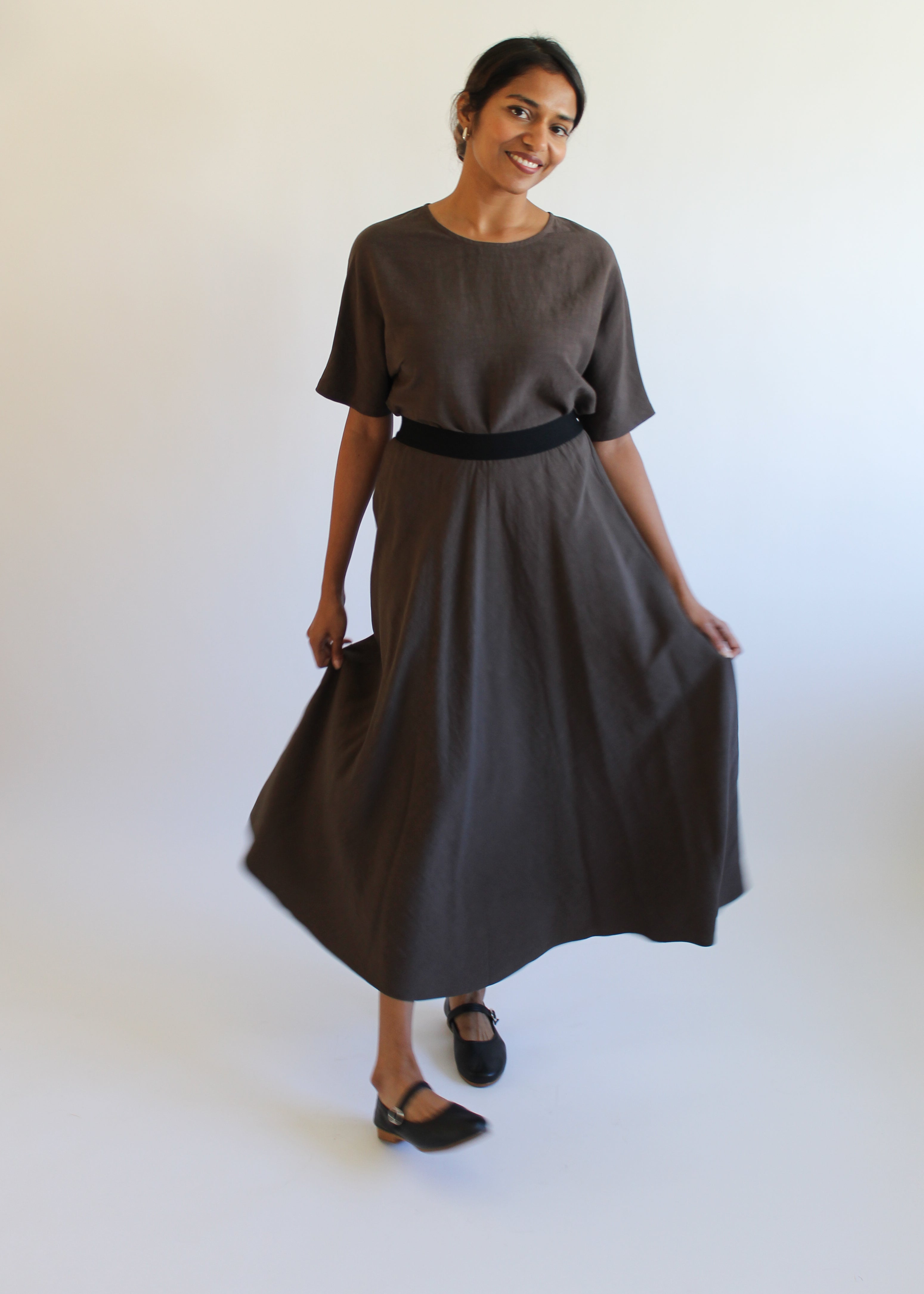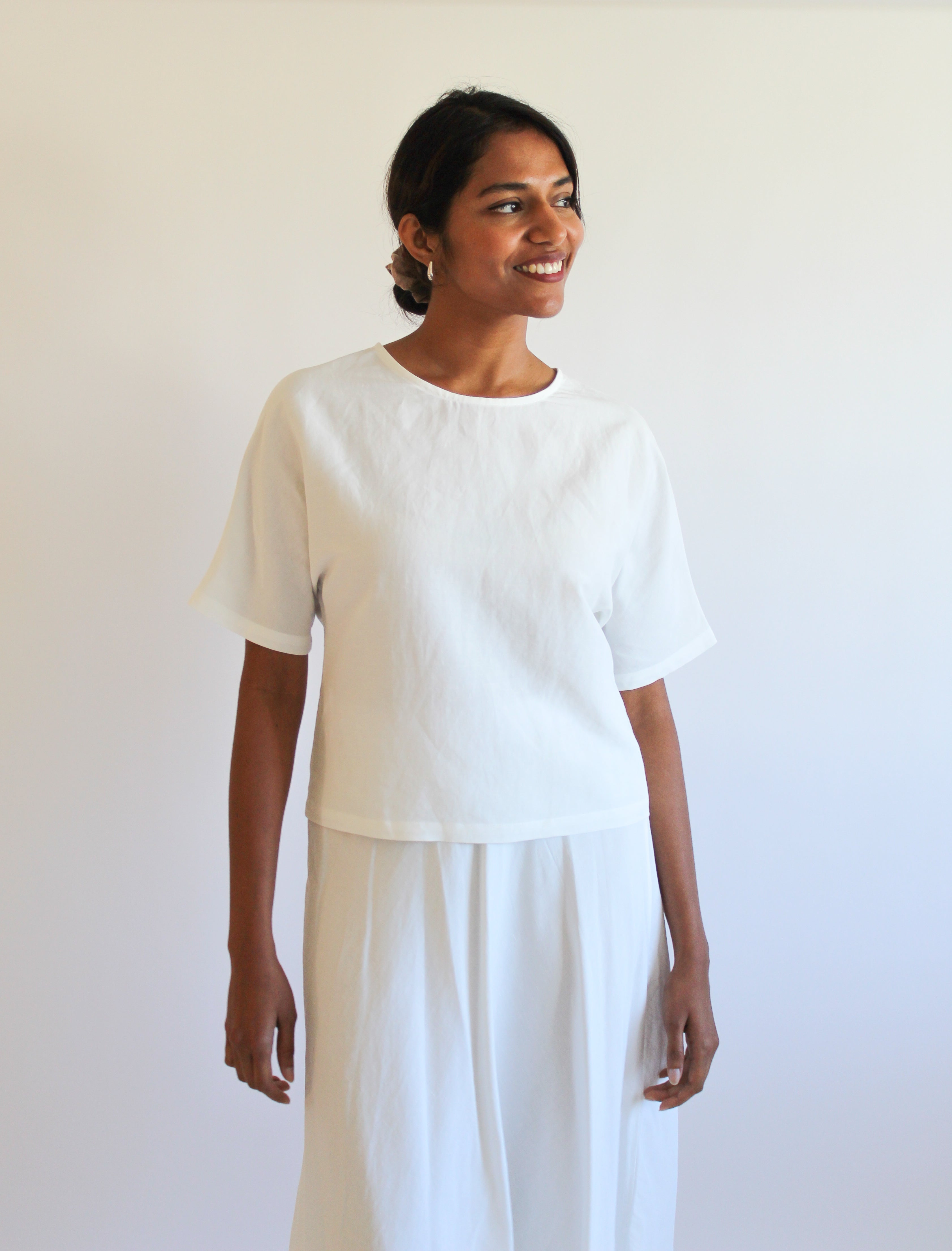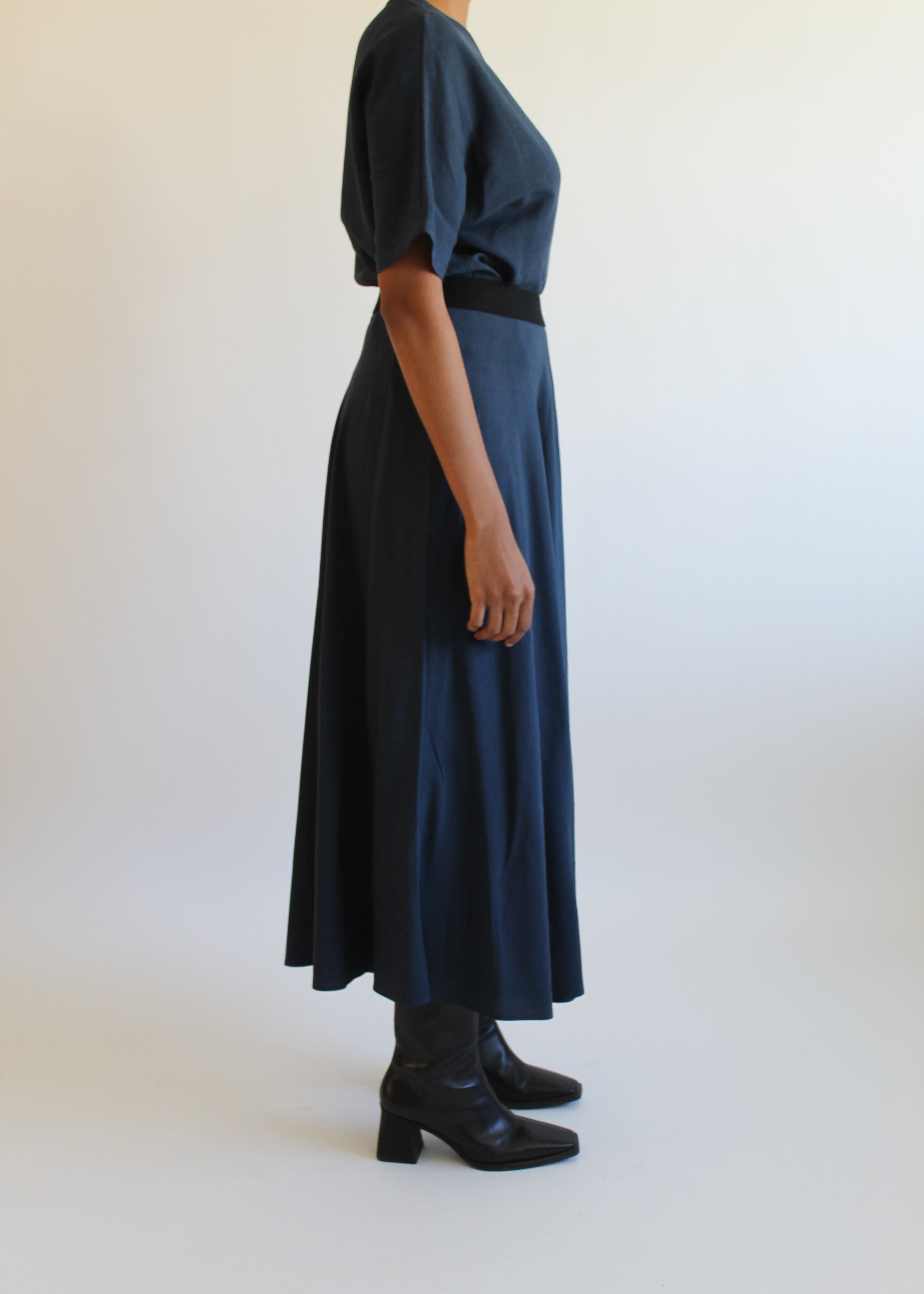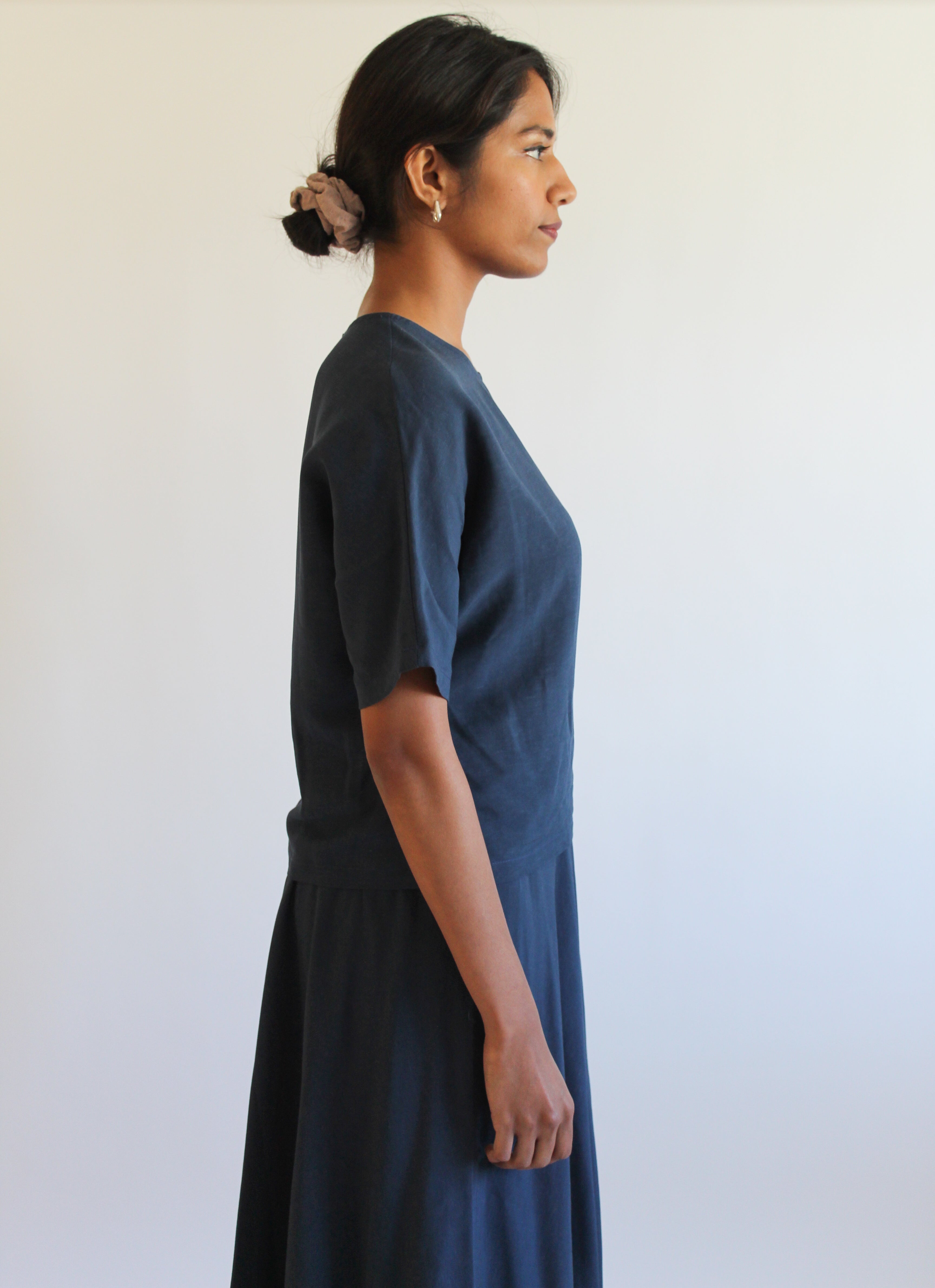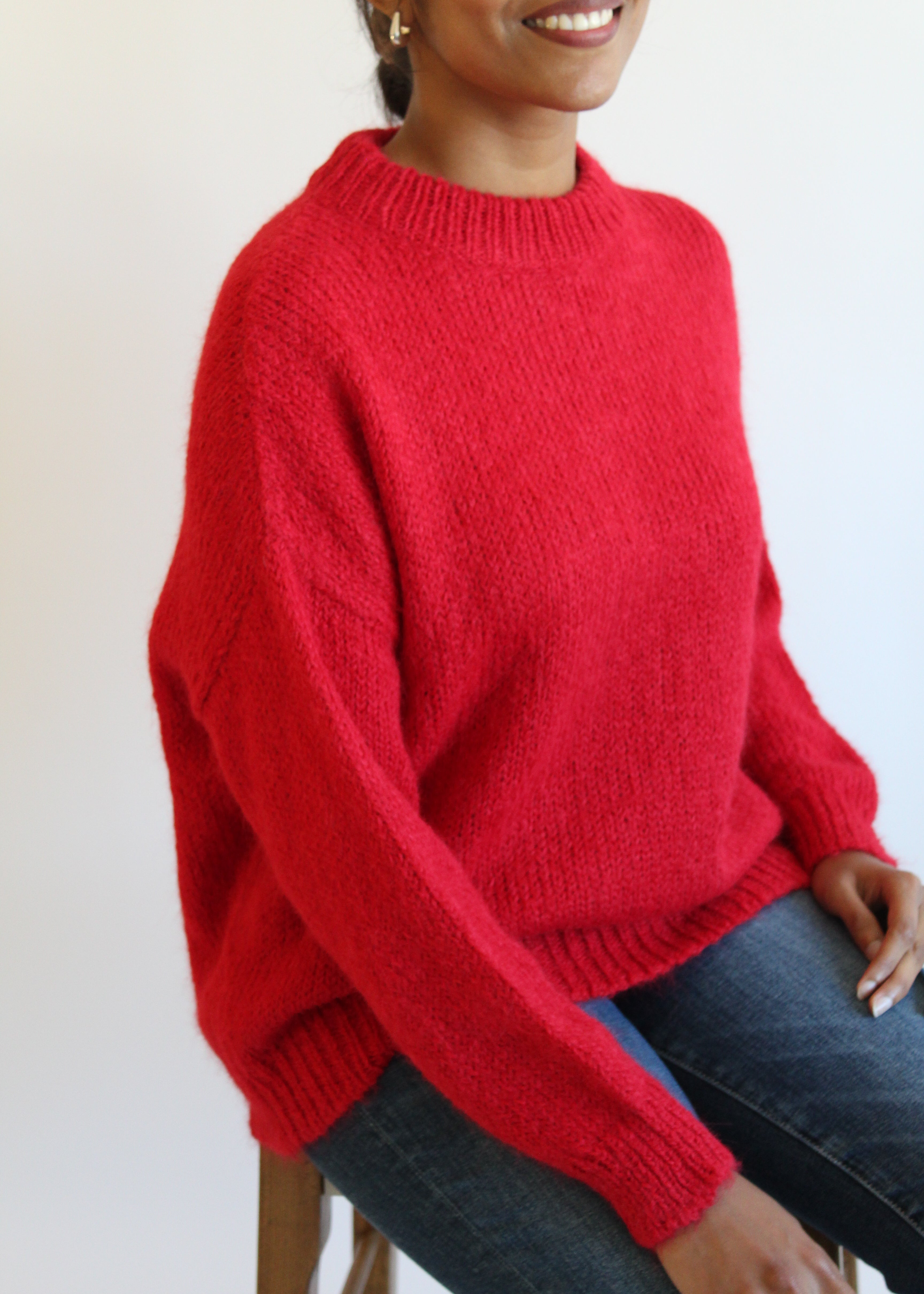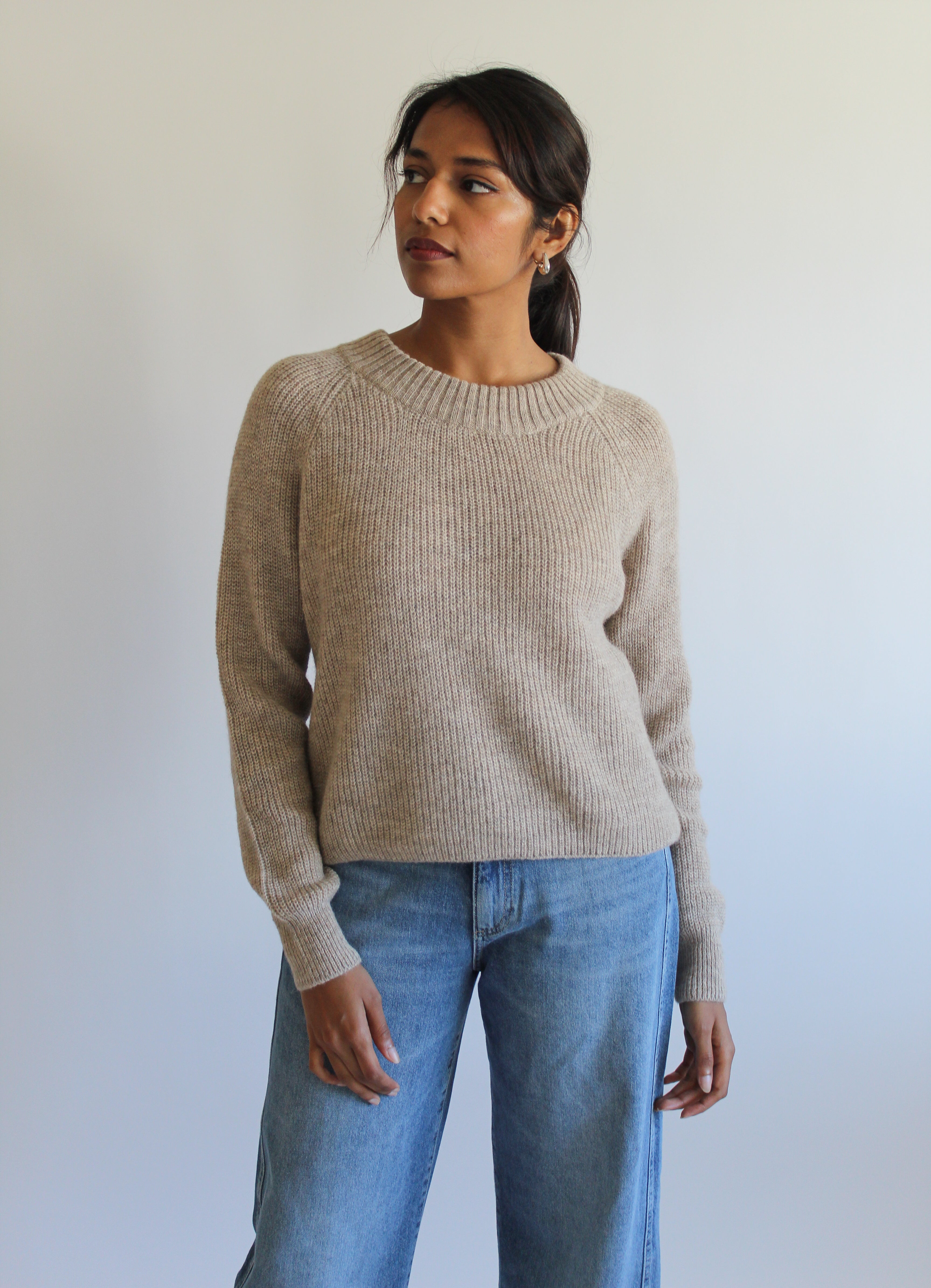What does slow fashion mean to you?
To me, it has something to do with size, with purpose, and with response time. If you’re really big, you can’t be slow.
Local is a part of slow fashion, because the response time is shorter. The orders are smaller. The roll purchases of fabric are smaller, and you’re just producing what you need.
Why did you start designing?
At Sattva, we try our best to perfect our product mix, but we are always at the mercy of what our designers produce. I started thinking how we could involve the customer in a conversation regarding what they like or dislike about a piece. That was one of the biggest motivators to start. There is a conversational aspect to the design, it’s like having all your customers on the design team.
What do you value most about producing a collection locally?
Being a part of every step of the process. I can go to the factory, I can pick something up and touch it. Again, it has to do with slow fashion, and being able to pivot easily.
The local process aligns with our values by bringing business to the local economy, supporting carbon neutrality, and by creating something that is unique and unusual. It is particularly special to have these pieces made locally, as there isn’t much fashion production in Halifax, making our pieces unique and meaningful for our customers.
What is the most challenging aspect of the design process?
I am new at this, so figuring out the workflow, timing, and learning the process have been the greatest challenges - athough I haven’t found these things as challenging as scheduling them into my life as an entrepreneur.
The other challenging aspect is the scaling, growth, and infrastructure required to have proper organization. As simple as keeping track of all of the fabric you have, where it is located, how many buttons you may need, and whether there are enough of each size. There is an added level of challenge designing in Halifax as the resources are not plentiful.
How does your personal style translate into your design process?
My own wardrobe is not complicated. The things that I reach for are things that are simple, made of natural fabric, and fit well. It changes and evolves as I do. My preference is always to have high quality over quantity. If you have great basics, you always have something to wear. That is a huge thread throughout the collection and within Sattva. Getting dressed is something we have to do every day, and it should be enjoyable. It shouldn’t be complicated, and it shouldn’t start your day in a negative way. That’s why I like the idea of having great basics and uniform dressing sets.
At this point, I am creating things I love and/or things that are missing from our product mix at Sattva. If I can remember a dress that we had years ago that we can’t get anymore and how it would have been perfect if we had just combined it with another dress, I’ll design it. That is how a lot of the pieces come to be. Alternatively, I will design something I’ve been looking for my whole life and haven’t been able to find. My personal style and my experience with working with women and in retail guide my design considerations.
Where do you find inspiration? What is your creative process?
Inspiration comes from everywhere. It comes from the desire to make dressing easy. It comes from the desire to fill the needs of our customers.
I think my role as a designer is designing out of functionality and need. The styles and colours within the collection are relatively simple. The creative aspect comes through wardrobe building and how things can be easily worn together. I’m not really designing as an artist or to create art, I am designing to create things that will enhance the quality of people’s lives. I am designing to make people’s day better, easier. Art does that too, but this is more of a practical approach.
When customers come into the store, they tend to come in with a problem to solve and I am designing to solve those problems.It’s about clothes that make people’s day better.

















